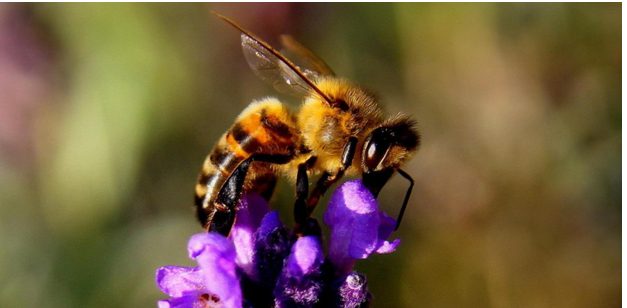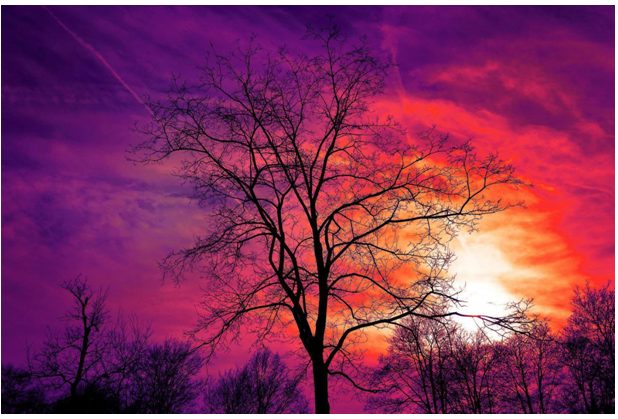Purple and yellow are two highly popular colors. Yellow is a color that makes people feel bright and happy, while purple gives off calming feelings of romance.
While you may be familiar with these colors, you may wonder what color does purple and yellow make when mixed. That’s the question we will be answering in this guide.
We will also be covering how you can mix different shades and some of the uses that you might have for these colors.
So get out your art supplies and get ready to see the possibilities that mixing purple and yellow offer you!
How you can mix purple and yellow?
Before we look at the ways you can mix these colors together, we shall look at the process behind it. When you mix purple and yellow, you will most likely get a brown color.
The shade of this brown will vary depending on the colors that you choose to mix together. We will cover that in much greater detail soon though.
For now, the way that you can mix purple and yellow will depend on what you’re using to create your picture. Paints are mixed together in order to create new colors and shades.
This is consistent no matter what kinds of paints you are using. You will typically be using either watercolors, acrylics or oil paints when creating a painting.
There are other variations but these are the main ones used for painting. Mixing your colors is done in a similar way no matter what paint type you’re using, but some are definitely messier than others.
Other mediums can be a bit different, even if the idea behind the mixing will generally be rather consistent.
With mediums like pastel or crayon, you will typically color one shade and then color the second one over it to mix it. These are a few examples of the ways you can mix colors with your mediums.
No matter what you may be using, you can find out the results by practicing and experimenting before committing to the final artwork. You will find drastically different results of mixing purple and yellow depending on several factors.
Most of it is about trying out different things, but we will also look at some ways you can influence the result.
Are purple and yellow a good combination to mix together?
When it comes to colors, we often look to various color wheels to see how they interact with one another. If colors are on opposite ends of the color wheel, they are known as complementary colors.
This will mean that they will generally look nice together and will work well in designs. Purple and yellow are two examples of these complementary colors on the color wheel.
That means that they will almost always look very pleasing to the eye when used close to one another. But what about when you mix them?
As we mentioned, you will likely get a brown color when mixing purple and yellow. Brown may not be the most exciting color but it is one that has many uses in painting.
No matter what you’re painting, you can probably find some brown somewhere in the image. That means that purple and yellow are a great combination of colors to mix and use together.
This is true no matter whether you mix them to make brown or use them as part of a larger design.
Therefore, the answer to the question of whether purple and yellow are a good combination is almost always yes!
There are some shades of purple and yellow that may not work together, but more often than not they will.
In the next few steps, we will look at some ways you can use this color combination as well as the ways you can mix and match them.
What results you can expect?
We established in previous steps of this guide that purple and yellow will give you some kind of brown. But what kind of brown can you expect?
That is a question that does not have an immediately apparent answer. As with any color mixture, you can land up with drastically different results depending on the quantities of colors you mix.
Brown will be the most common color you can land up with, but if you add a small amount of yellow, for instance, you will have a different shade of purple.
This is something we will discuss in greater detail later. Even if you do end up with brown, the shade can vary greatly.
This is something that you can experiment and play around with before you start painting. If you have various shades of purple and yellow in your paint set already then you can try to mix them.
There’s no need to worry about trying to achieve specific colors now, this is just about getting a feel for how the colors mix. There is a certain amount of logic you can apply to the process.
If you mix darker shades with each other then the end result will be a darker color. The same can be said for lighter shades.
It can start to get a bit less certain when you start to mix one light color with one dark color. This is another topic we shall discover later on.
For now, stick to trying to make colors that just look nice to you. If you think it’s too dark, add some yellow.
If it’s not dark enough, try more purple or add a darker shade of the color. If you play around with different combinations, you will start to get a feel for it.
This will prepare you for when we start to play around with the color mixes in a more deliberate fashion. To summarize, if you mix purple and yellow the result will usually be brown.
There are some variations you can expect, but we will see about that soon. Also, using purple and yellow together in a design will almost always result in a pleasing combination.
We can conclude this point in the guide by saying that you can’t go wrong with this color combination no matter how you’re using it.
Best uses for purple and yellow mixes
Now that we know the kinds of results you can expect from mixing yellow and purple, you may be wondering what you can do with the results.
Quite a lot would be the quick answer to that! We know that there are a few variations you can end up with, but let’s stick with brown for now.
Just with that one color, you have lots of possibilities. Brown may not be the funkiest color, but it has so many uses!
If you were painting food, for example, you will find many different kinds that can use brown. It could be potatoes, steak or maybe some delicious chocolate.
Even with these examples, you will find that the browns may need to be dark or light depending on the situation. Browns could also be used for things like feathers, house roofs, bricks and animal fur.
It is also common with dirt and tree bark along with other natural surfaces. If you’re painting a portrait of someone, then you may need browns for skin tones and eye colors.
As you can see, it can be used for a wide variety of purposes! If you were to end up with a dark purple mix because you don’t use much yellow, then you might get a pretty lilac.
This would be great for some flower petals or leaves. The easiest answer to the question of what the mix would be best for would be whatever you need it for!
Whatever you may be painting, you can adapt the colors to work with your creative vision. Remember that purple and yellow can be a good combination for general design as well.
So if you’re arranging a room, having purple and yellow elements can look really stunning. It doesn’t always work, so try to make sure you like the combination before committing to it.
If you were making a banner or a birthday card, then it’s another way that using purple and yellow can work really well. If done right, it can result in a very pleasing image.
Now we have covered that purple and yellow are a dream team as far as colors are concerned!
Next, we will look at some of the practical methods you can use when mixing up your colors and mediums.

Lighter and darker purple and yellow mixes
In this guide, we have established a few things to take note of. Two of the main ones are that mixing purple and yellow will generally result in brown and the other aspect is that there are variations.
There is a logical method that you can apply when mixing colors. Even if you are not trained in color theory, certain things just make sense.
For example, if you have a rich black paint and add a smaller spot of a weaker color, it’s safe to assume the black will overpower it. The same would be true if you added a small amount of a dark color to a big blob of white paint.
You can use this to your advantage when you are painting anything. For example, let’s say you’re painting a dog with light brown fur.
You mix your purple and yellows and the brown is just way too dark. How can you make it match the color of the fur more closely?
There are a few ways to do it. For one, you may want to add a bit more yellow.
Either that, or you could find a lighter shade of yellow in your collection and add that. Any additional you make should be done with care.
You can always add more of a color but it’s harder to compensate when you add too much. Try to look closely at the nuances of the colors you’re trying to recreate.
Let’s keep using the dog as an example. Maybe you will note that although the fur is a light brown that there is a slight reddish hue to it.
If so, try to add a small dab of red until you have the hue you want. White is also almost always the perfect choice when you need to make the color lighter.
As you may have guessed, black is good when you need to make the color a bit darker. But you need not stick to these exclusively to make the colors darker.
Using colors like light yellow or dark blue can also help get the colors where you need them. It’s all about being observant and experimenting.
This is all mostly for if you want the colors to be as accurate as possible. If you’re going for a more stylistic approach, then you should simply go with the colors that are most pleasing to your eyes.
With all these tips at your disposal, you will have any colors you could possibly need as well as having an excuse to play with your colors!
In summary
You have reached the end of this guide, and now we have solved the question of what color does purple and yellow make. We hope that you found all of the tips in this guide to be helpful!
Remember that this color combination is especially handy if you need shades of brown. Don’t feel limited to that, though, as there are other variations that are possible.
It can be helpful to buy a spare sketchbook that you can try out different color combinations in. that way you will always be prepared before adding the final colors to your page or canvas surface.



